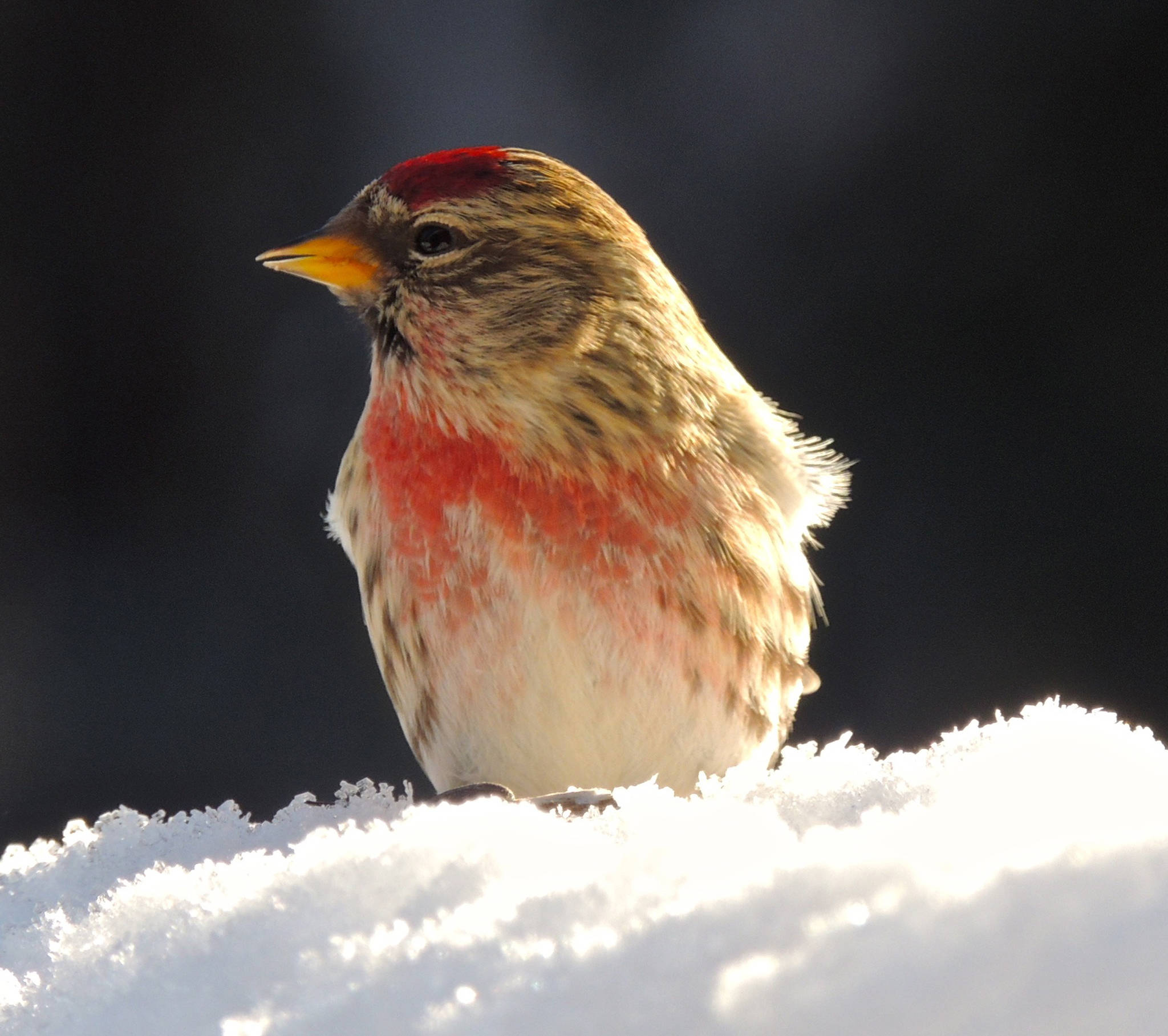Why, a friend asked, are there so many birch seeds on top of the snowpack in Fairbanks? A day later, the answer hit me in the head.
As I walked through the forest, I looked up just in time to get peppered with frozen specks from above. Redpolls, finches that fit in the palm of your hand, were in a birch tree overhead, hammering at clumps of seeds clinging to otherwise naked branches.
A rain of seeds came wafting down, slowed by their oval wings. On the snow, redpolls pecked at the seeds, each shaped like a pumpkinseed but not much larger than a period.
Those tiny seeds are one of the best available energy sources for redpolls, which often spend the entire year in Alaska but have been known to show up en masse farther south.
During “irruptions,” birders in New England can suddenly find their feeders clogged with redpolls from Canada and Alaska. People in the Lower 48 documented winter irruptions (“to increase rapidly or irregularly in number,” according to the American Heritage College Dictionary) of redpolls during 2008-2009 and 2012-2013.
The birds are hit and miss here in Alaska. In Anchorage, Christmas bird-counters saw 8,000 redpolls in 2004. A year later, they counted 500.
Trudy Cook in the Ninilchik/Anchor Point area on the Kenai Peninsula says she has not had redpolls at her feeder for the last three years. After a long absence, the birds suddenly appeared at Anne Ruggles’ Fairbanks home in early November 2018.
“This year the birch have really produced a lot of seeds,” said Ruggles, former director of the Alaska Bird Observatory. “It’s easy to tell where the (redpolls) are feeding along the ski trails because there is a blanket of birch seeds on the trail, sometimes enough to cause you to lose glide.”
Jan Dawe, a botanist at UAF who started One Tree Alaska to highlight the many uses of Alaska birch, said this is an excellent seed crop year in the Interior. That seems to have played out in the recent Fairbanks Christmas Bird Count. After a record low count of just over 20 redpolls last winter, observers here saw more than 3,400 redpolls in December 2018.
Redpolls, seen in two varieties in Alaska — the common and the hoary — have attracted scientists’ attention because the birds survive super-cold temperatures. Physiologist Laurence Irving ranked redpolls’ feathers just behind pine grosbeaks for “apparent usefulness for insulation.”
Redpolls have a secret weapon other small birds, including chickadees, don’t possess: food pouches on each side of their necks. Scientists observing Umiat and Fairbanks redpolls that were “air-expressed” to Illinois for a 1963 study noticed that birds filled these esophageal diverticula with seeds just before the lights went out in the lab each evening.
Birds bulging their necks with sunflower seeds or high-calorie birch seeds just before going to roost can slowly digest them in the dark. It’s the human equivalent of surviving a winter night by pulling a few cheeseburgers into the sleeping bag.
• Since the late 1970s, the University of Alaska Fairbanks’ Geophysical Institute has provided this column free in cooperation with the UAF research community. Ned Rozell (ned.rozell@alaska.edu) is a science writer for the Geophysical Institute.

